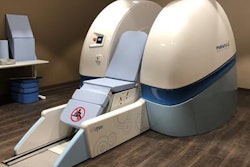Thursday, December 5 | 11:00 a.m.-11:10 a.m. | SSQ03-04 | Room E450B
3D fusion imaging combining cardiac CT and MRI may serve as a comprehensive, noninvasive diagnostic technique for evaluating coronary artery disease (CAD), according to this study to be presented on Thursday.A group from University Hospital Zurich in Switzerland developed a method combining data from multiple modalities: coronary CT angiography (CCTA), fractional flow reserve CT (FFR-CT), 3D cardiac MR perfusion, and 3D cardiac MRI with late gadolinium enhancement. The method relied on proprietary software to fuse the imaging data, with automated algorithms for volume rendering.
"Previous studies on 3D image fusion only investigated a subset of pathological aspects of coronary artery disease," presenter Dr. Jochen von Spiczak told AuntMinnie.com. "In contrast, our novel technique includes information on anatomy, coronary stenoses, hemodynamic impact, ischemia, and infarction in one and the same image."
The researchers applied their technique to 17 patients suspected of having CAD who underwent cardiac CT and MRI at their institution.
They found that multimodal 3D fusion imaging was feasible for all the patients. The fused imaging data provided various types of information, from ischemic burden and stenoses to the location of myocardial scars, out of a single 3D image. In contrast, data drawn from the conventional CT scans and MR images resulted in inconsistent findings for more than half of the cases. The fused imaging data were able to clarify the vast majority of these inconsistent findings.
"While conventional 2D readout of CT and cardiac MR images resulted in a substantial number of uncertain findings in our study, multimodal 3D imaging may help to overcome such difficulties," Spiczak said.


.fFmgij6Hin.png?auto=compress%2Cformat&fit=crop&h=100&q=70&w=100)





.fFmgij6Hin.png?auto=compress%2Cformat&fit=crop&h=167&q=70&w=250)











